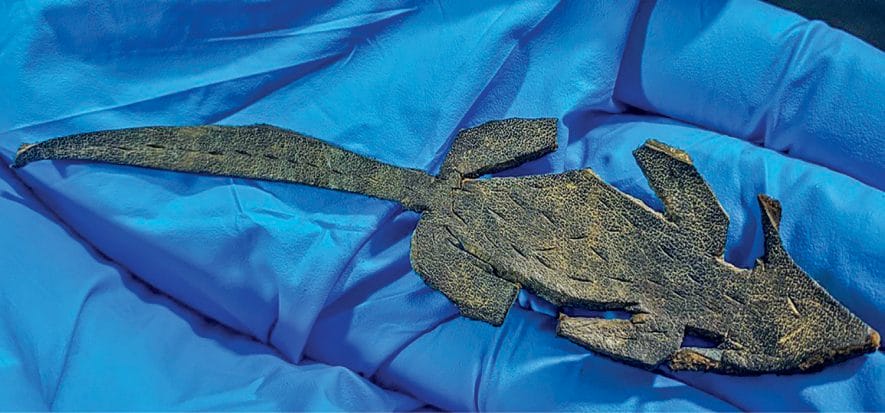Trick or toy? Experts and researchers, who specialize in studying finds of the Roman age, keep wondering about it. They are flabbergasted about a small leather object, which has become known out of an archaeological treasure chest. They discovered it in Vindolanda, an ancient Roman fort situated to the South of Hadrian’s Wall.
Trick or toy?
Such artefact resembles a little mouse. They first found it in 1993 near Vindolanda, an old Roman fort, located not far from Hexham, a British town. The archaeological site dates back to 120 AD. Researchers used to keep it, until present, together with many other leather finds, in the local museum. As reported by The Guardian, the object not only resembles a little rodent, but also matches its size. Apparently, it had originally a 3D shape; subsequently, they flattened it. Archaeologists and researchers are most interested in it because they had never discovered before any similar objects amongst finds possibly dating back to the ancient Roman age. They now wonder about its use. Some of them believe that the object was a toy for children. Others, instead, think it was a trick to scare people suffering from musophobia, that is, fear of mice.
Opinions
“Well, if it is a trick, it is very persuasive indeed – remarked researcher Barbara Birley while talking to The Guardian –. If someone was working in a dark room, at that time inside light used to be rather dim in general, he could have mistaken it, for sure, for a little mouse”. After all, for the records, the small animal was quite common around those places. “When they dug the barn buildings, in Vindolanda, in 2008, we discovered the bones of thousands of mice hidden below the floor of those buildings, where they used to live and banquet. Likewise, we found some more amid ears of wheat, fallen down from some stone slabs placed in the basement of the buildings – illustrated Andrew Birley, supervisor of the archaeological site –. It is amazing, then, someone made, 2,000 years ago, a little leather mouse to play with while taking inspiration from the surrounding environment”.
Picture taken from theguardian.com
Read also:










